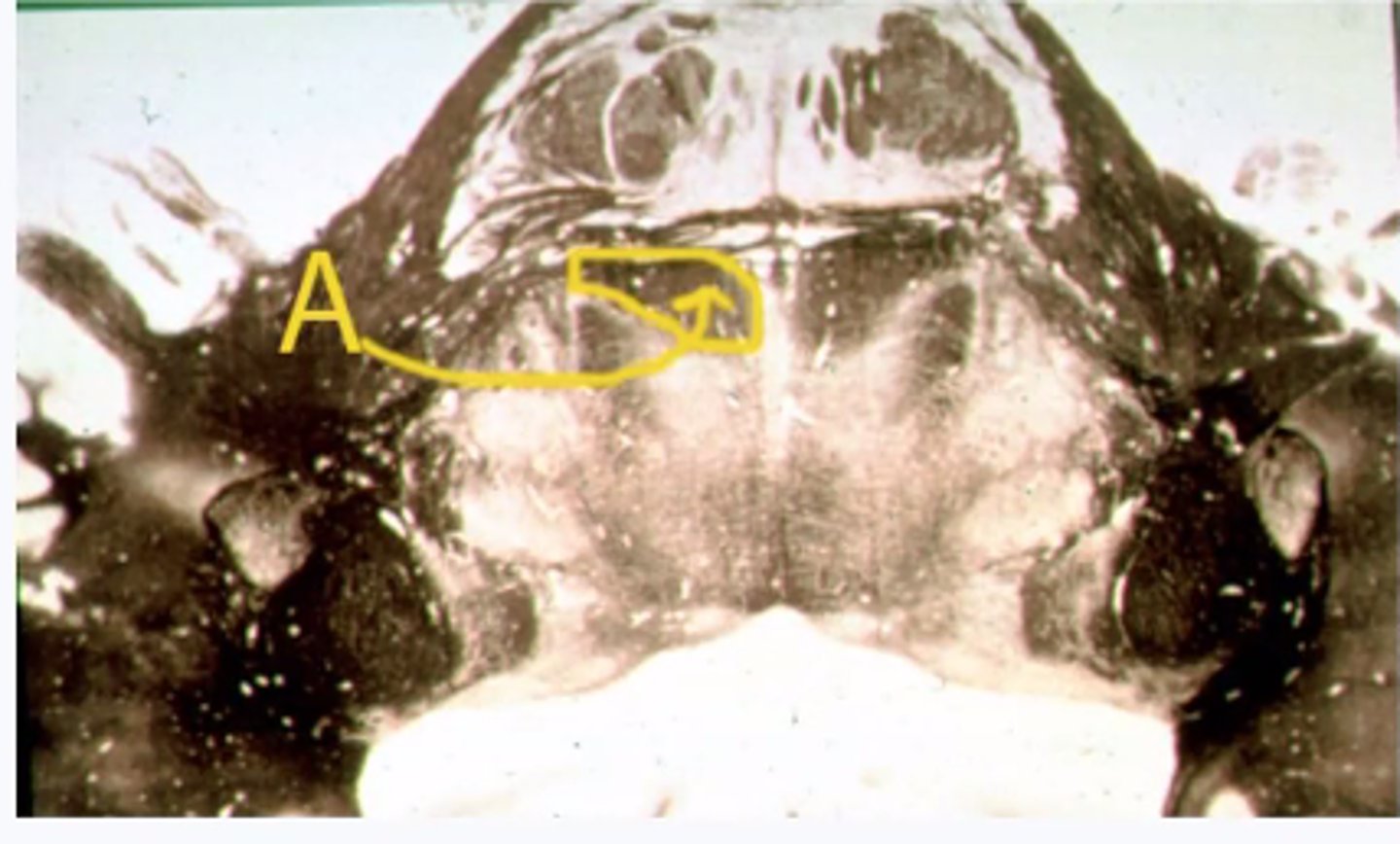Pons/Midbrain Poll Everywhere
1/21
There's no tags or description
Looks like no tags are added yet.
Name | Mastery | Learn | Test | Matching | Spaced |
|---|
No study sessions yet.
22 Terms
Superior colliculus
Identify the marked structure
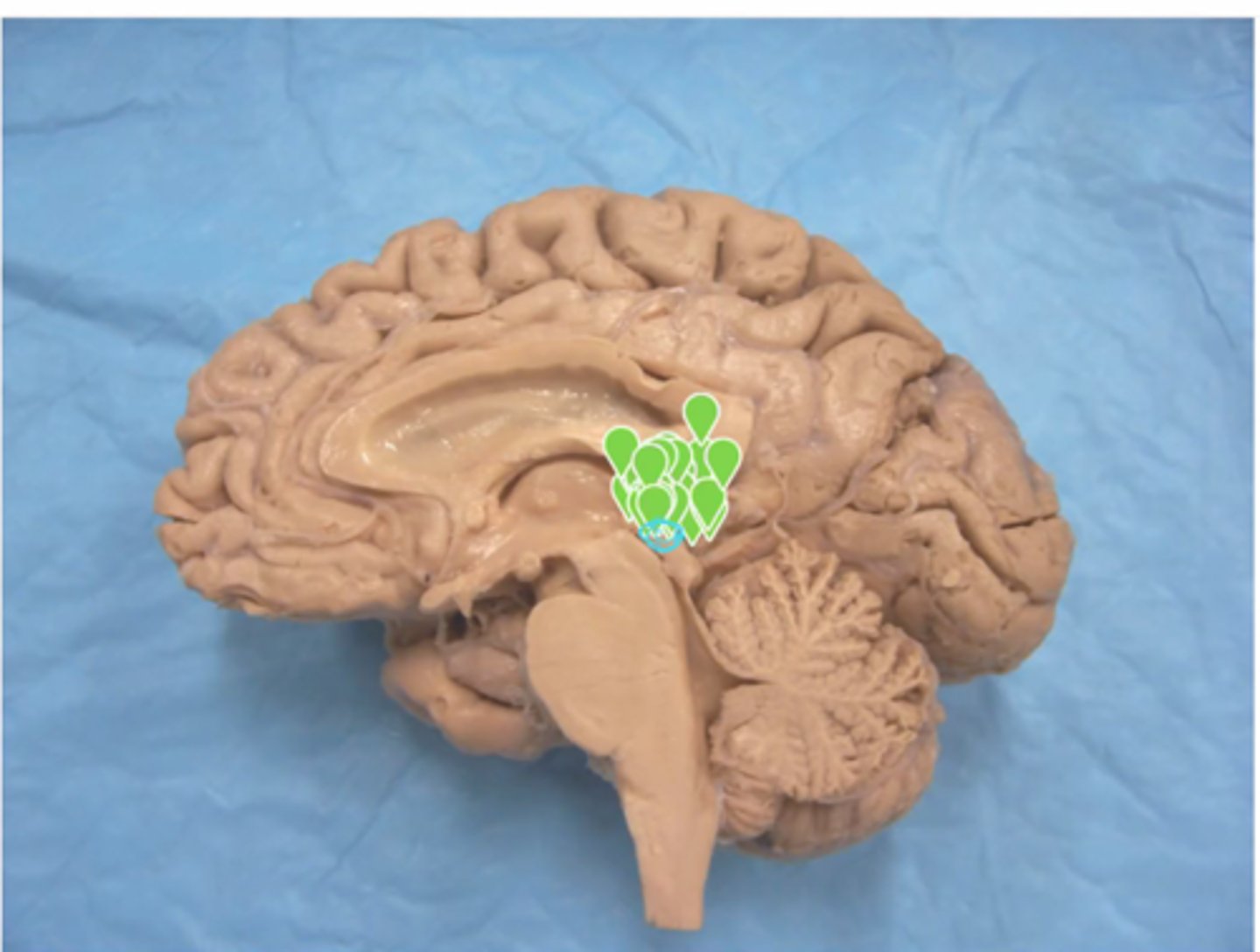
Pons
Identify the structure labeled "P"
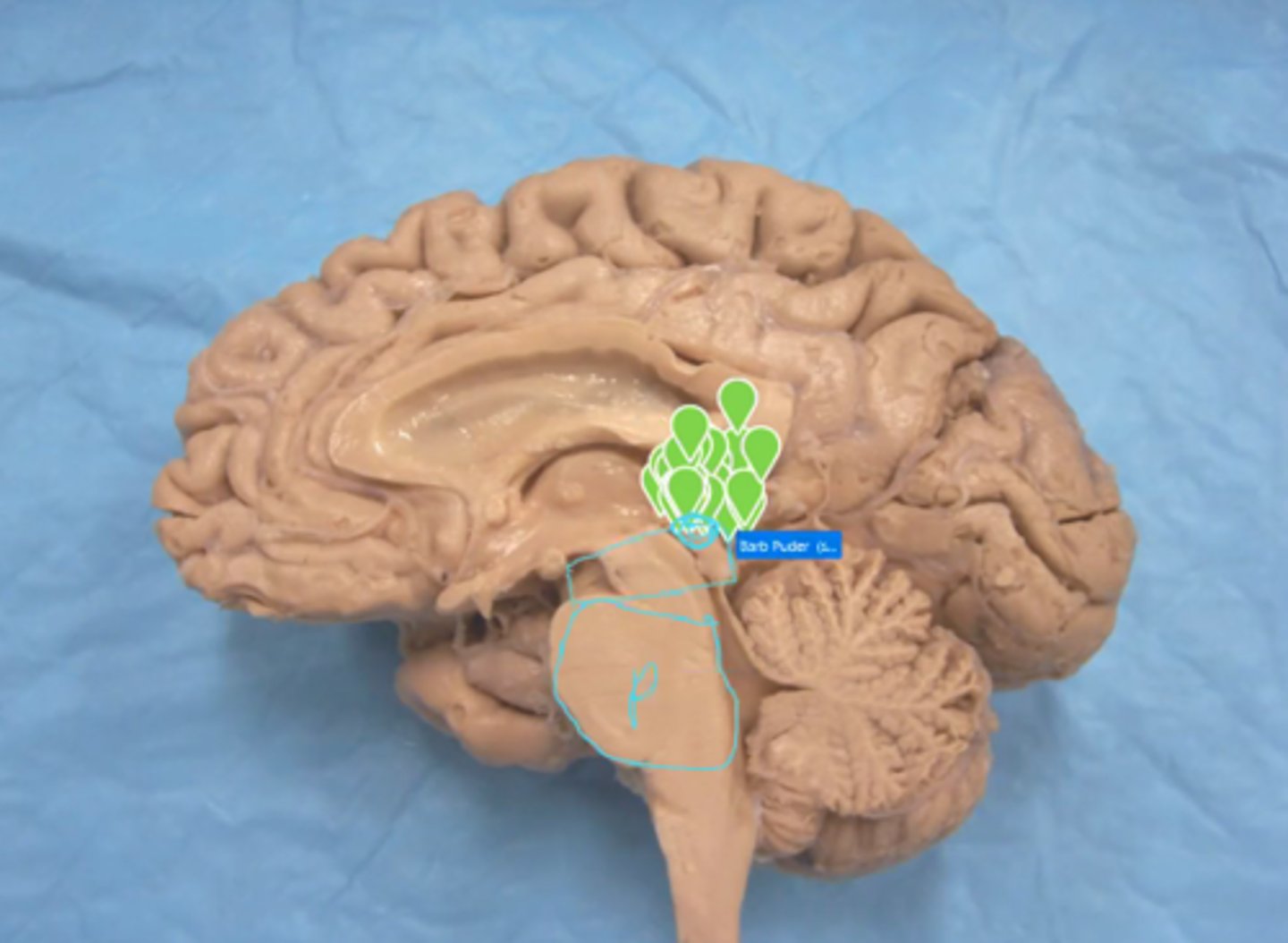
mid brain
Identify the structure labeled "MB"
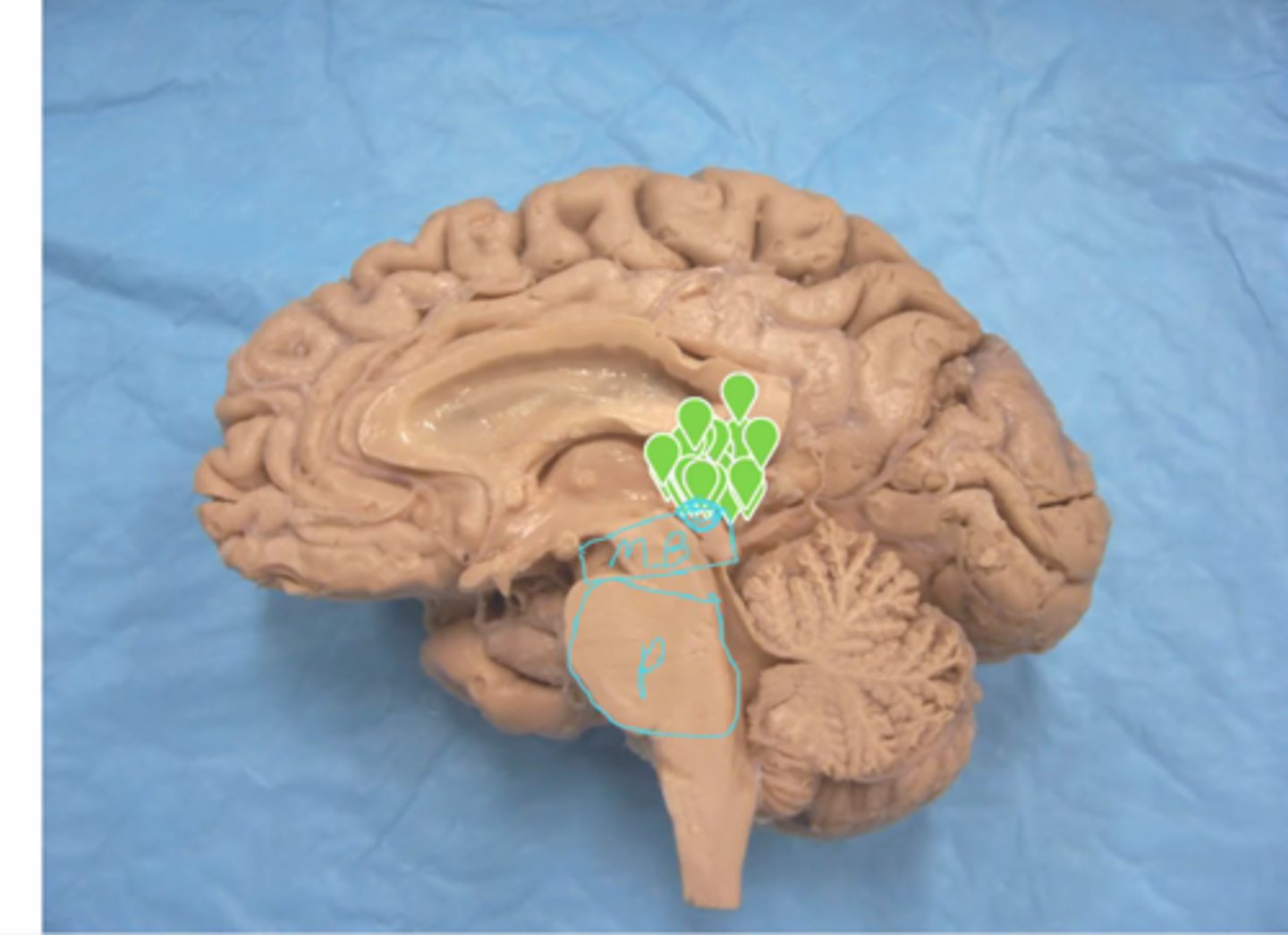
Cerebral peduncles
Identify the marked structures
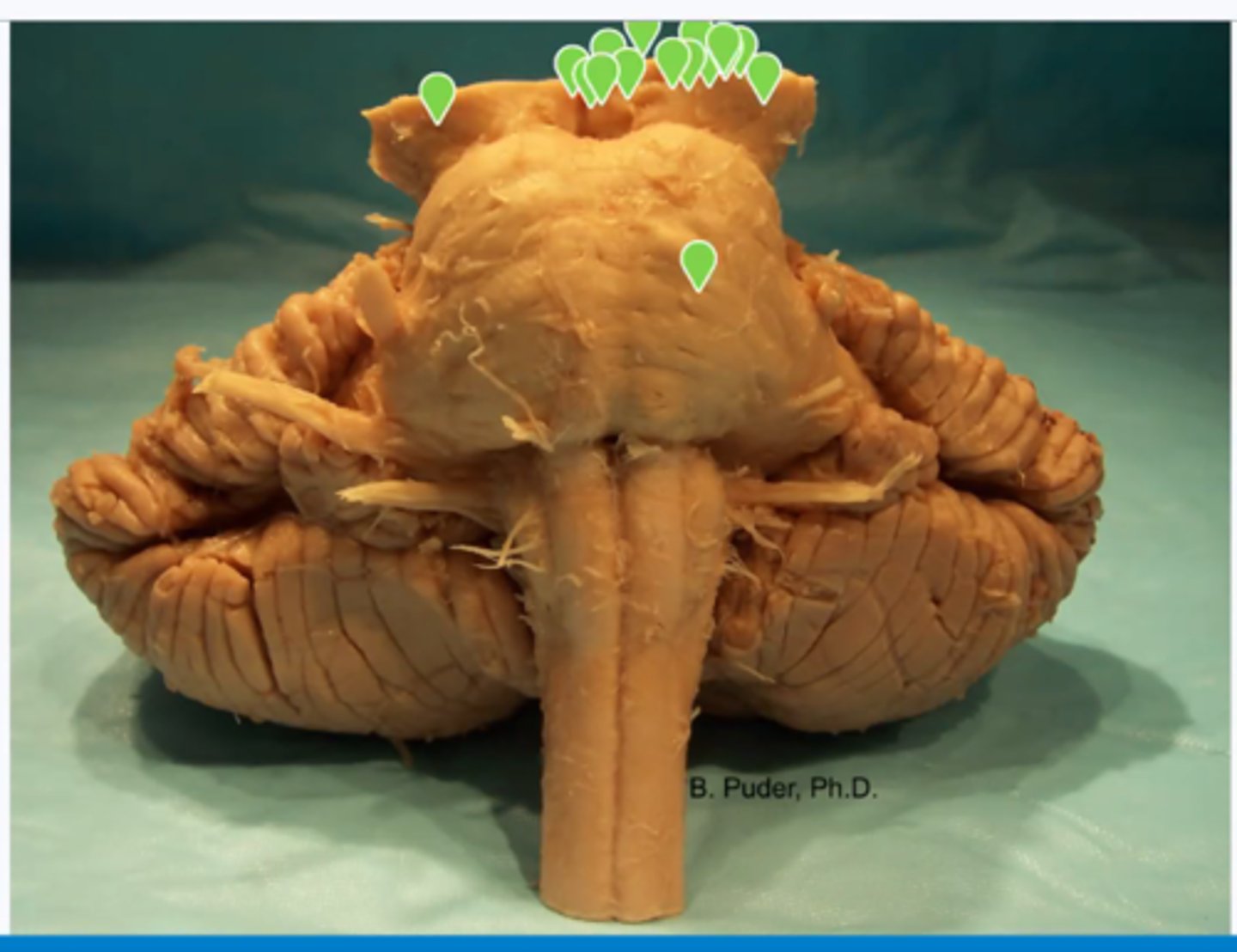
Facial (motor) nucleus
Identify the structures indicated by the outline and letter "A"
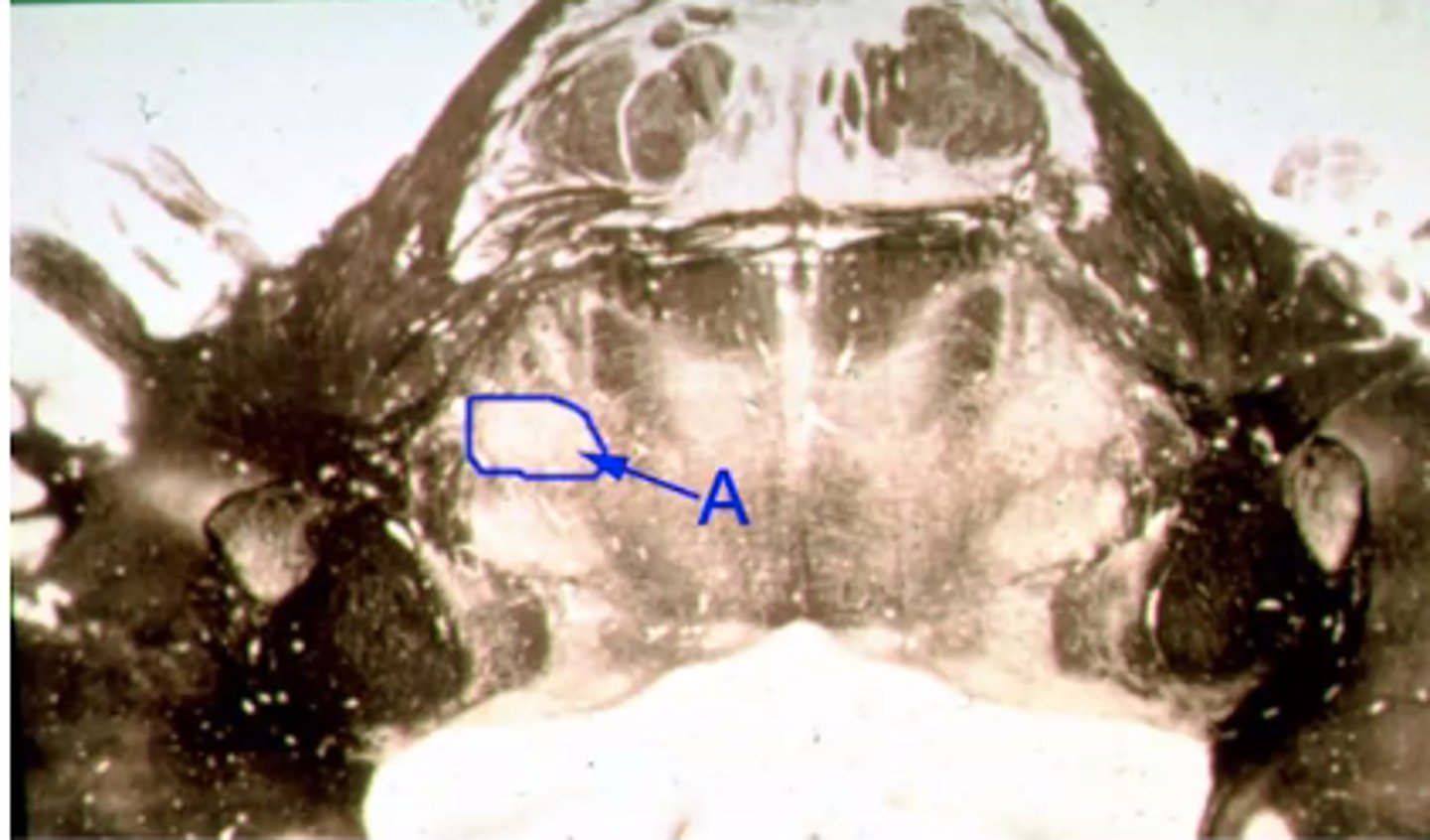
Spinal trigeminal nucleus
Identify the structures indicated by the green outline
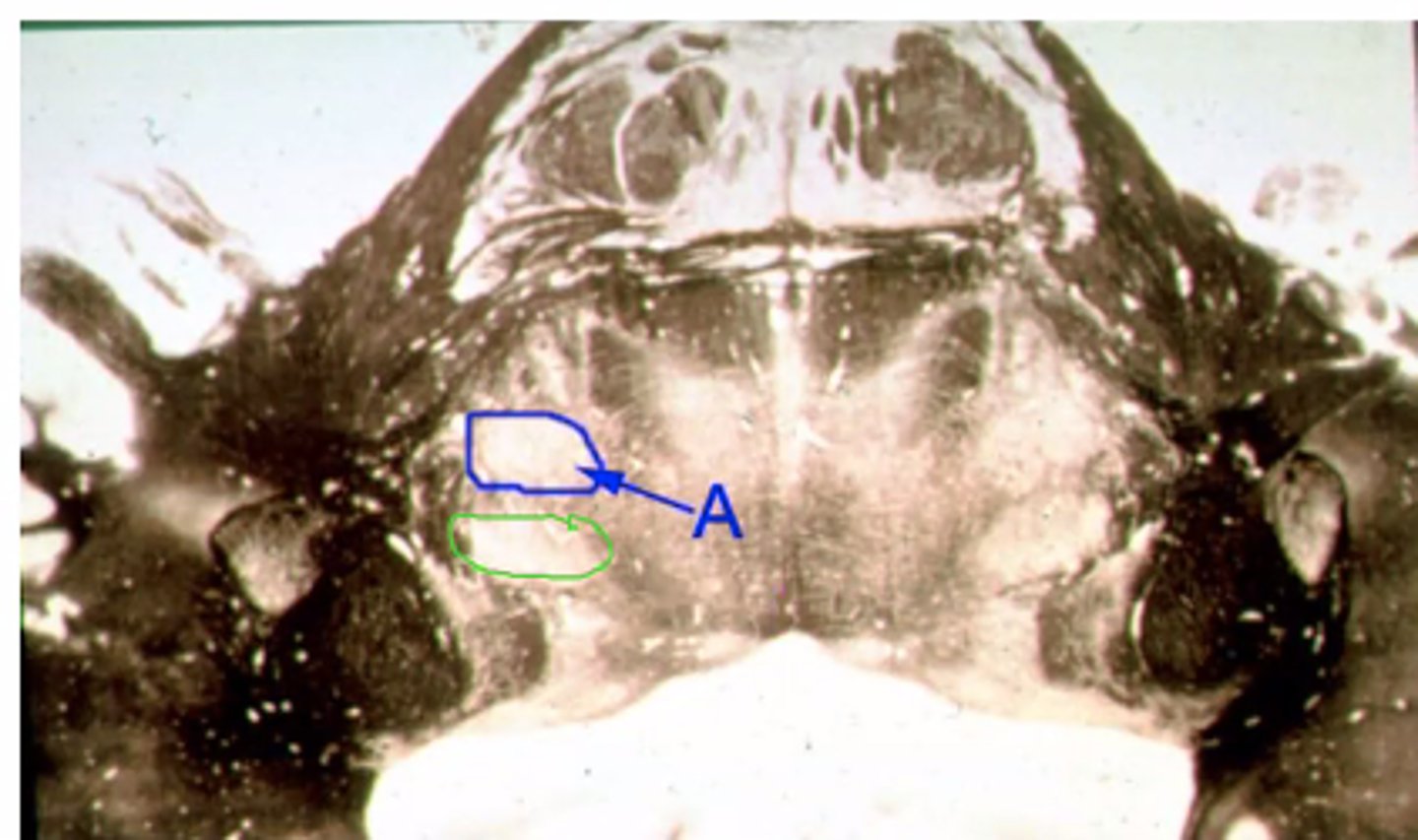
Oculomotor nucleus (CN III)
Identify the structures indicated by the outline and letter "A"
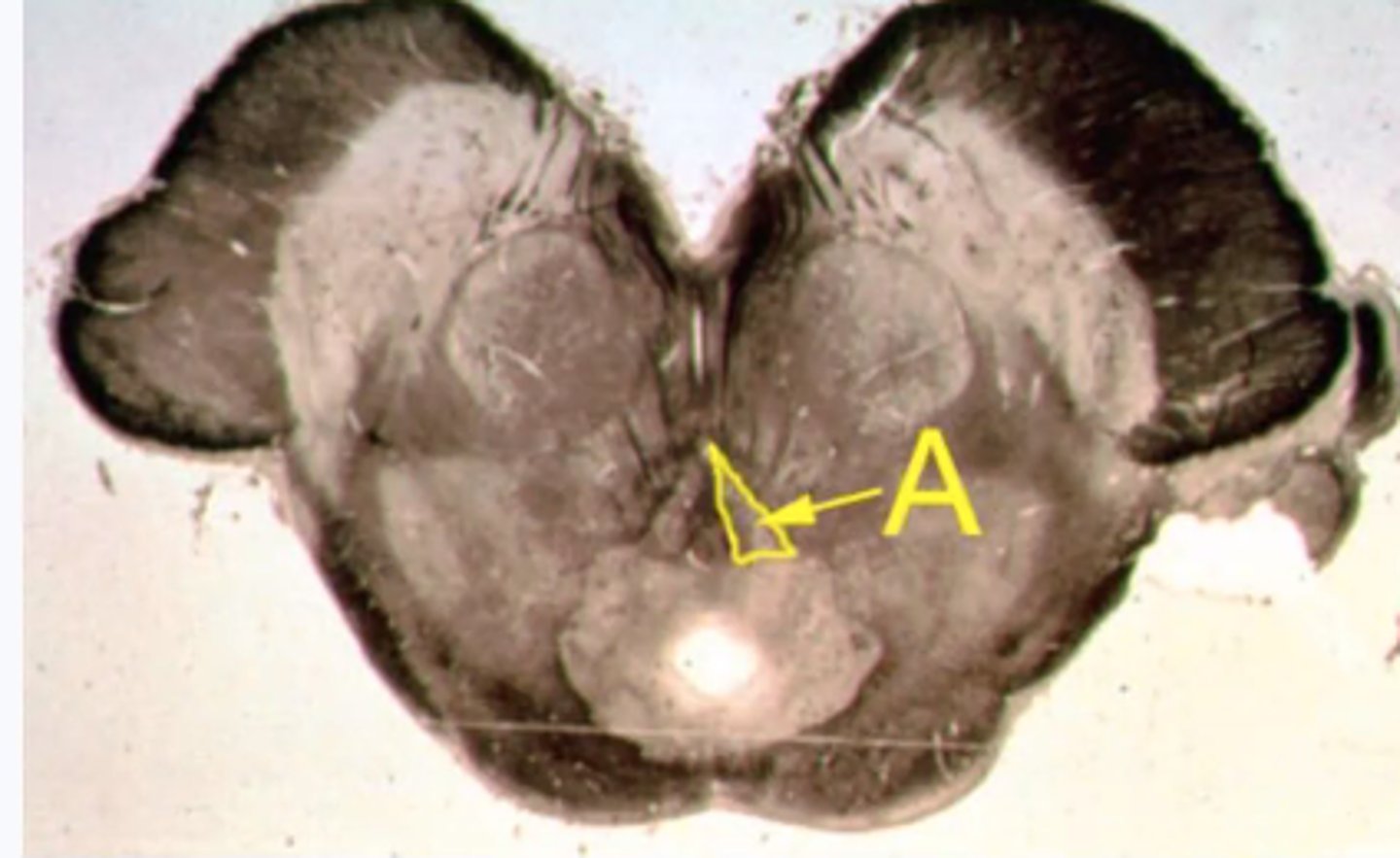
Periaquaductal gray
Identify the structures indicated by the outline and letter "A"
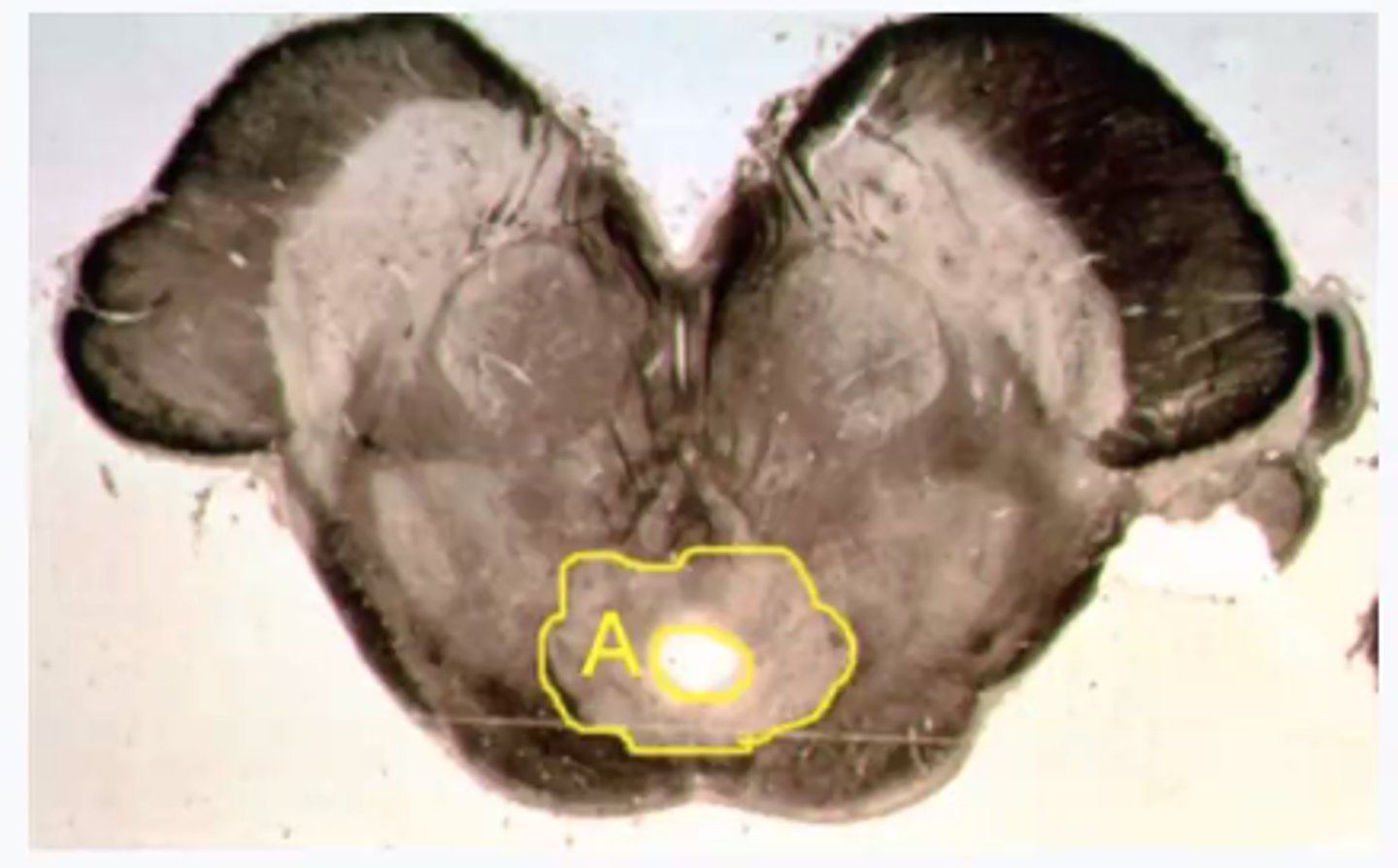
Substantia nigra
Identify the structures indicated by the pink outline
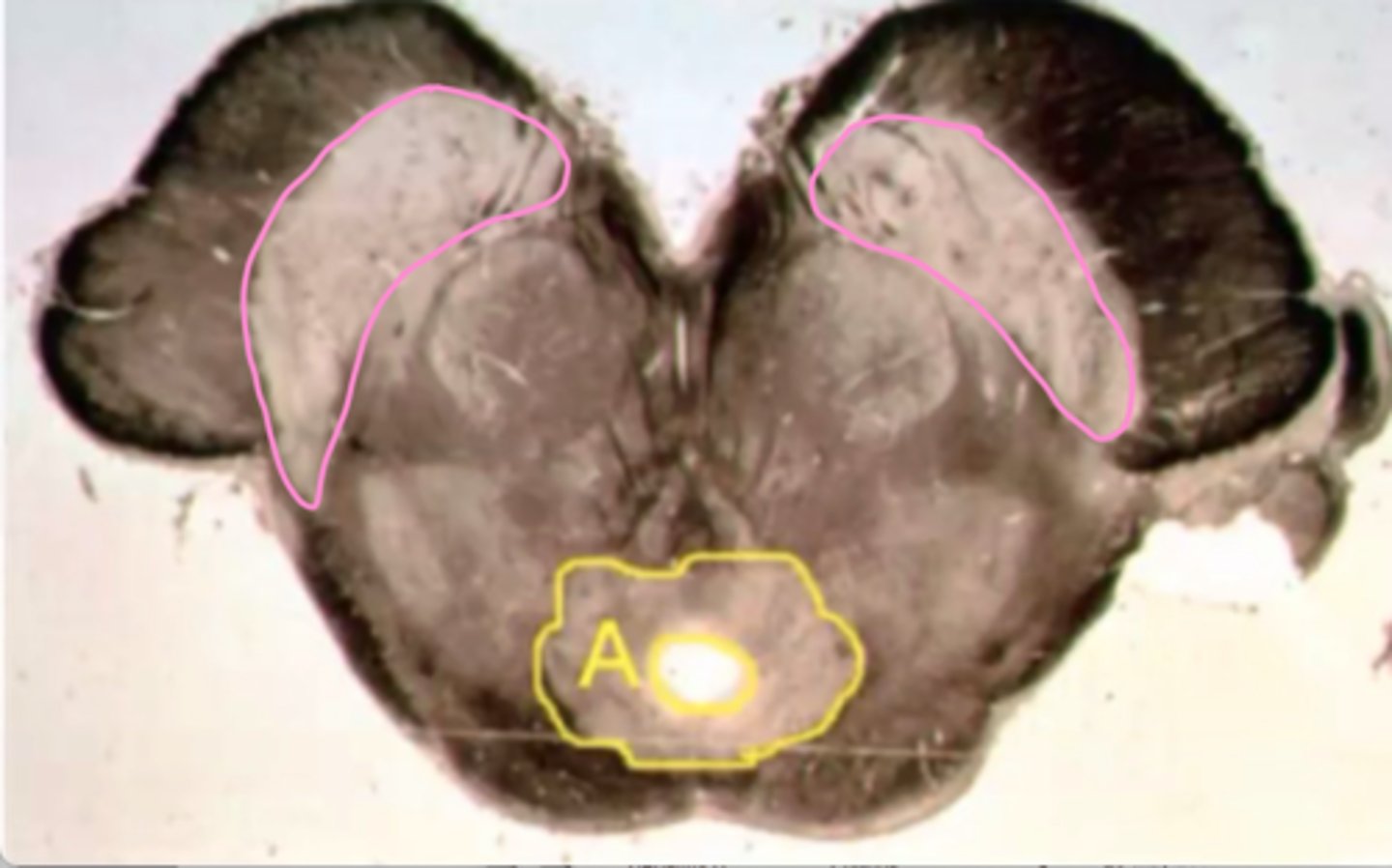
medial lemniscus
Identify the structures indicated by the outline and letter "A"

Corticospinal tracts
Identify the structures indicated by the green outline
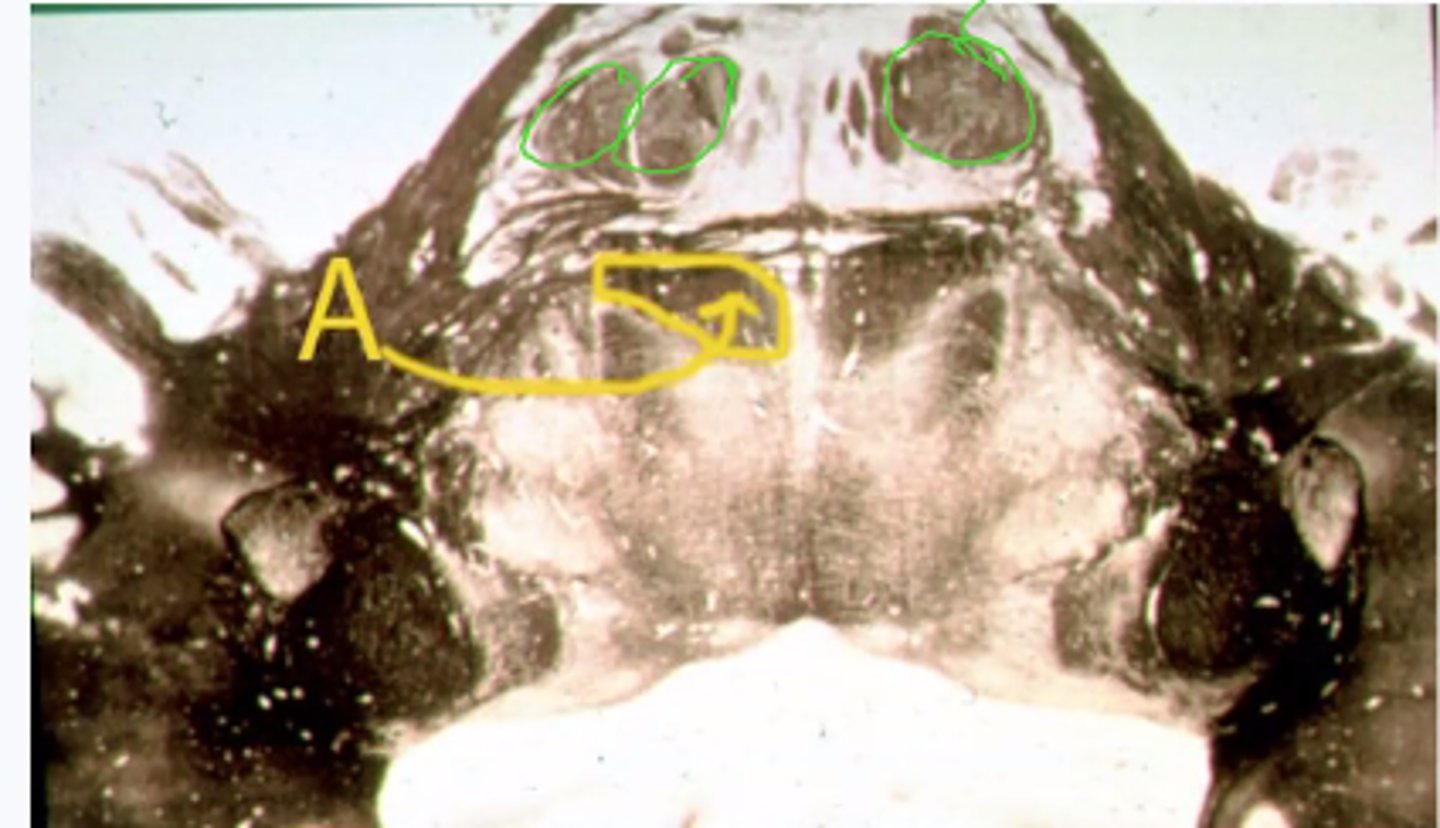
Trigeminal motor nucleus
motor = medial
Identify the structures indicated by the outline and letter "A"
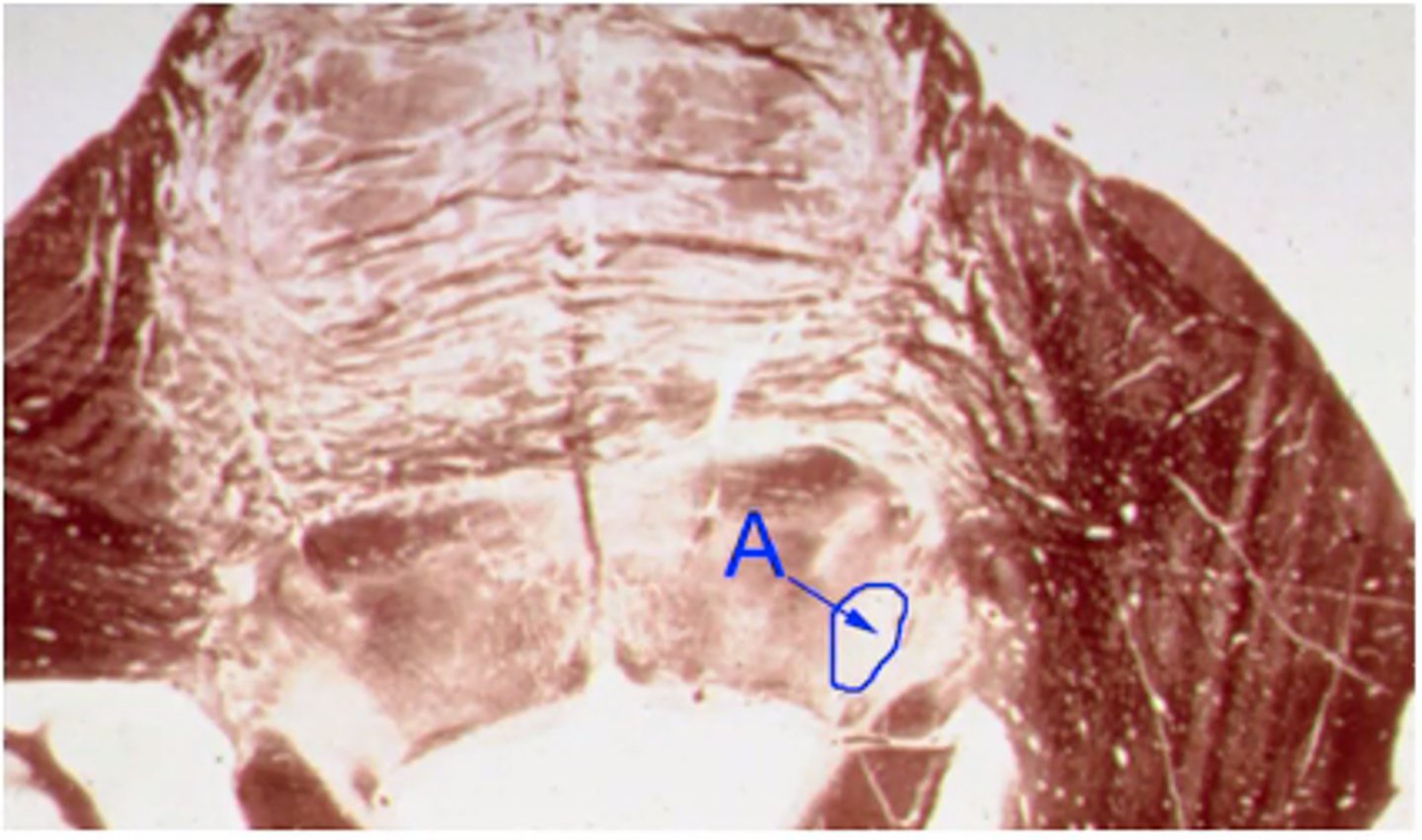
Principle sensory nucleus
Identify the structures indicated by the green outline
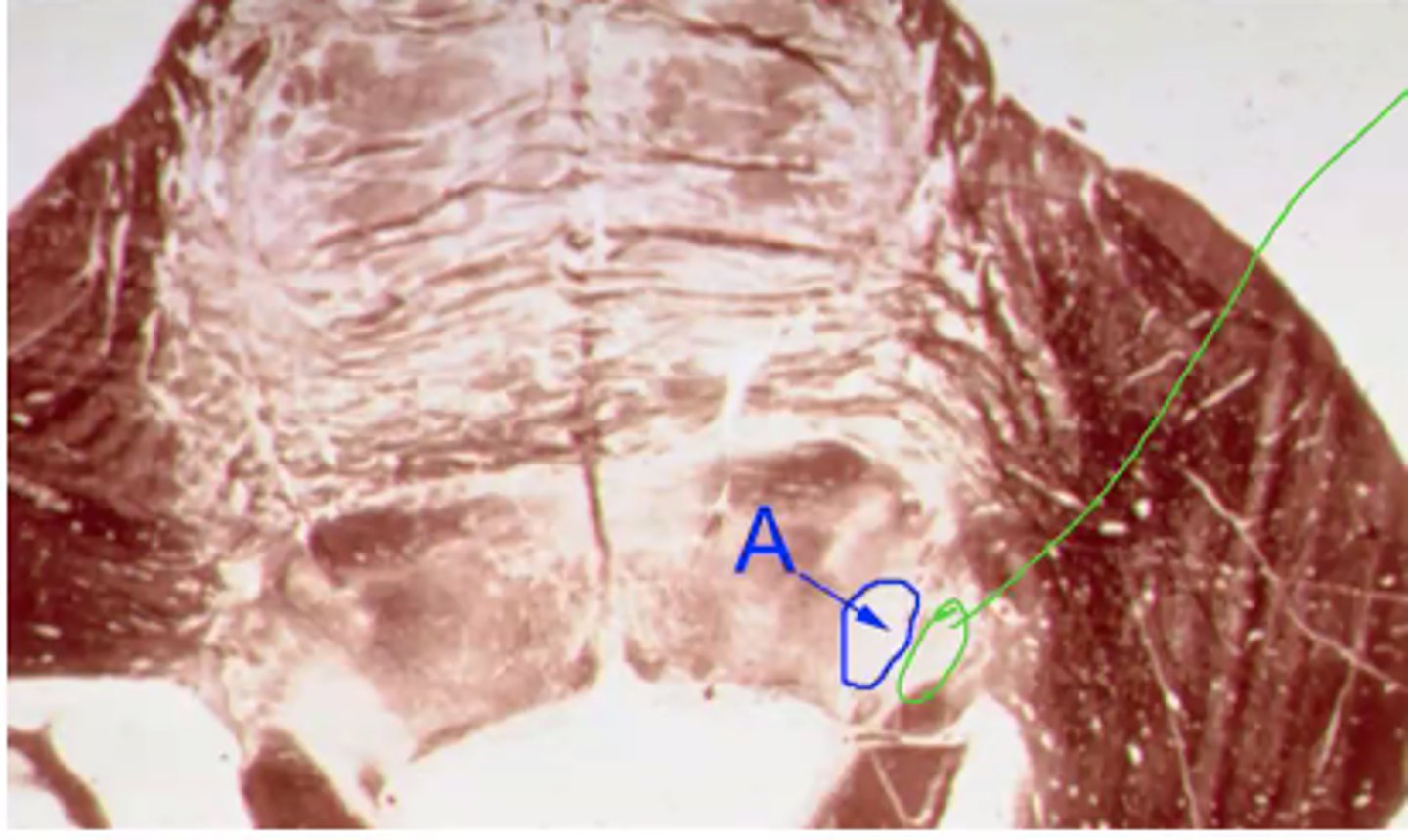
Mesencephalic nucleus
Identify the structures indicated by the pink outline
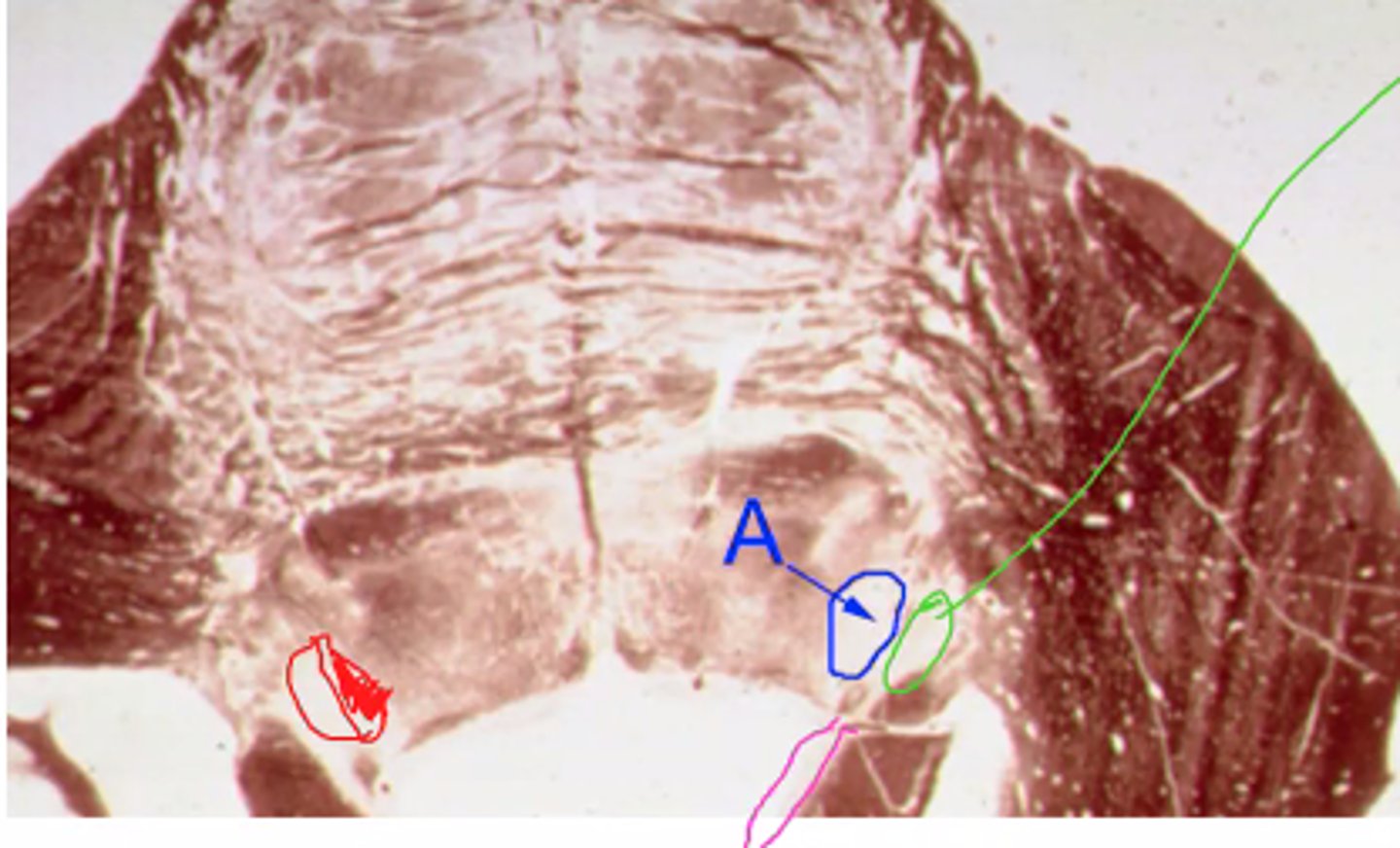
middle cerebellar peduncle (MCP)
Identify the structures indicated by the outline and letter "A"
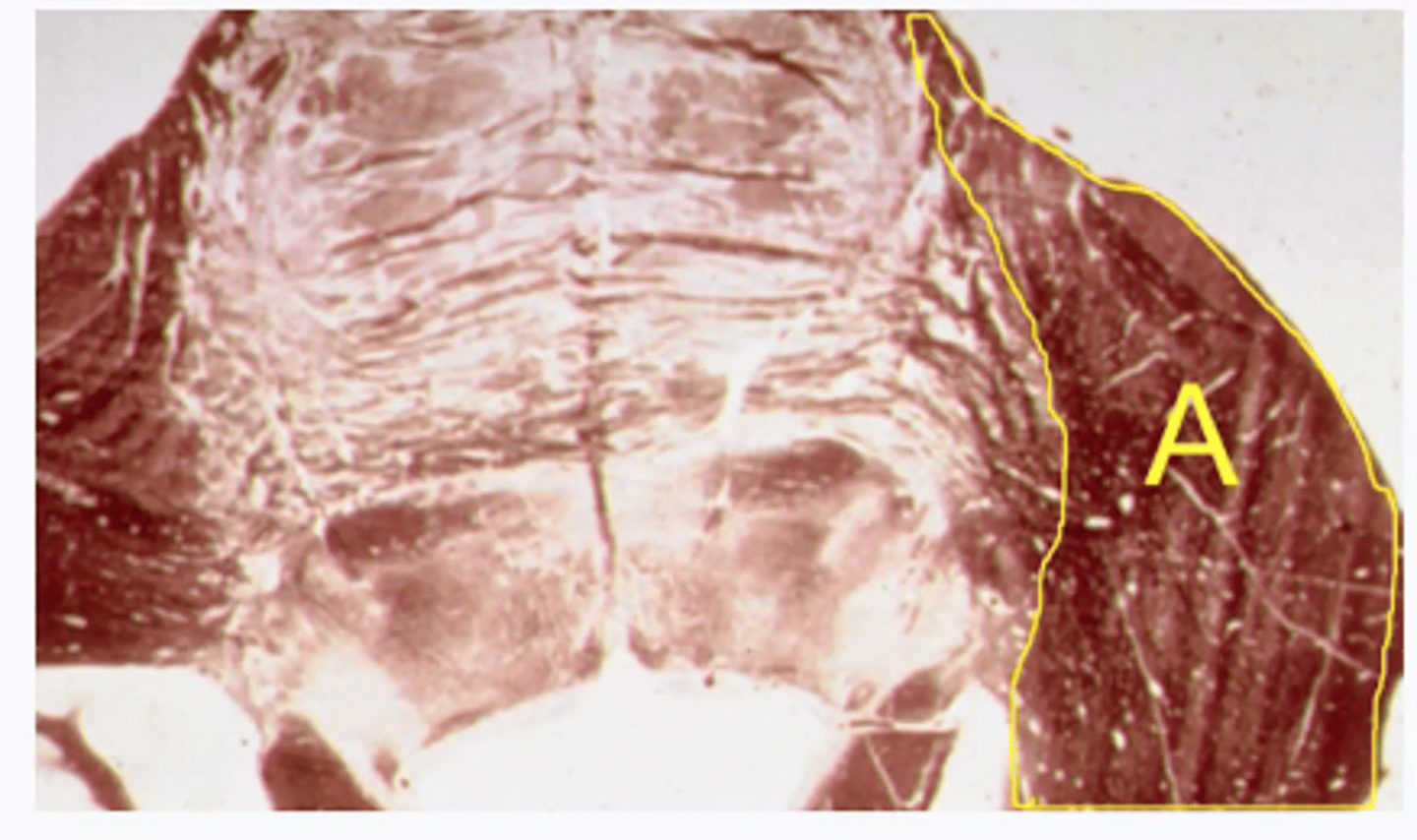
Superior cerebellar peduncle
Identify the structures indicated by the pink outline
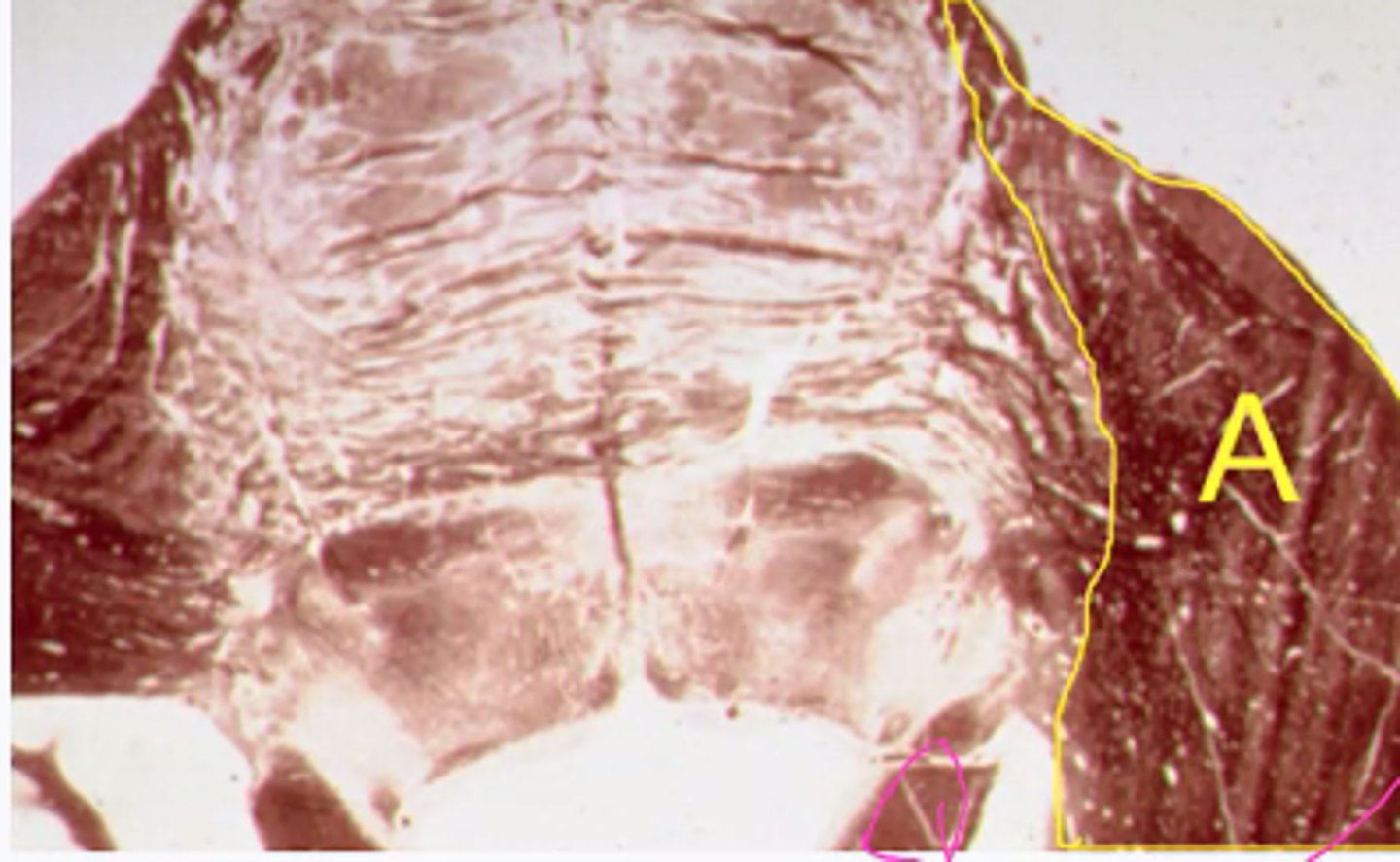
substantia nigra
Identify the structures indicated by the outline and letter "A"
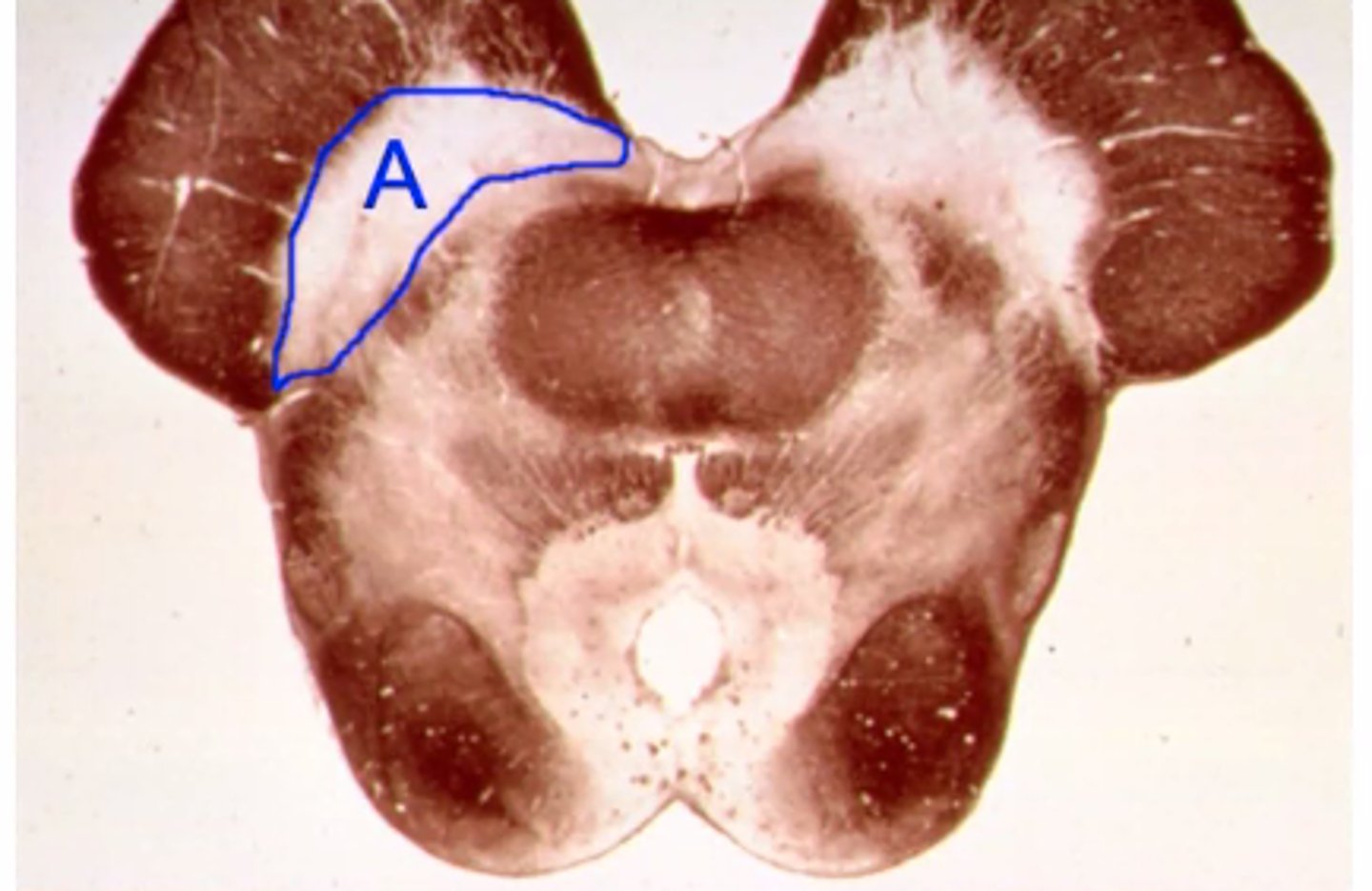
Red nucleus
Identify the structures indicated by the outline and letter "A"

C. Superior cerebellar & posterior cerebral aa
The 2 blood vessels that give blood supply to midbrain are:
A. PICA & AICA
B. Basilar & PICA
C. Superior cerebellar & posterior cerebral aa
D. posterior cerebral & middle cerebral aa
E. Basilar & superior cerebellar aa
B. Basilar artery
The main blood supply to the pons is the:
A. vertebral artery
B. Basilar artery
C. Superior cerebellar artery
D. PICA
E. AICA
E. Contralateral spastic paresis to the body
Describe the signs/symptoms if structure "A" is lesioned
A. Ipsilateral loss of fine touch to the body
B. Ipsilateral loss of pain & temperature to the face
C. Contralateral flaccid paralysis to the upper extremity
D. Ipsilateral loss of vibratory sense to the body
E. Contralateral spastic paresis to the body
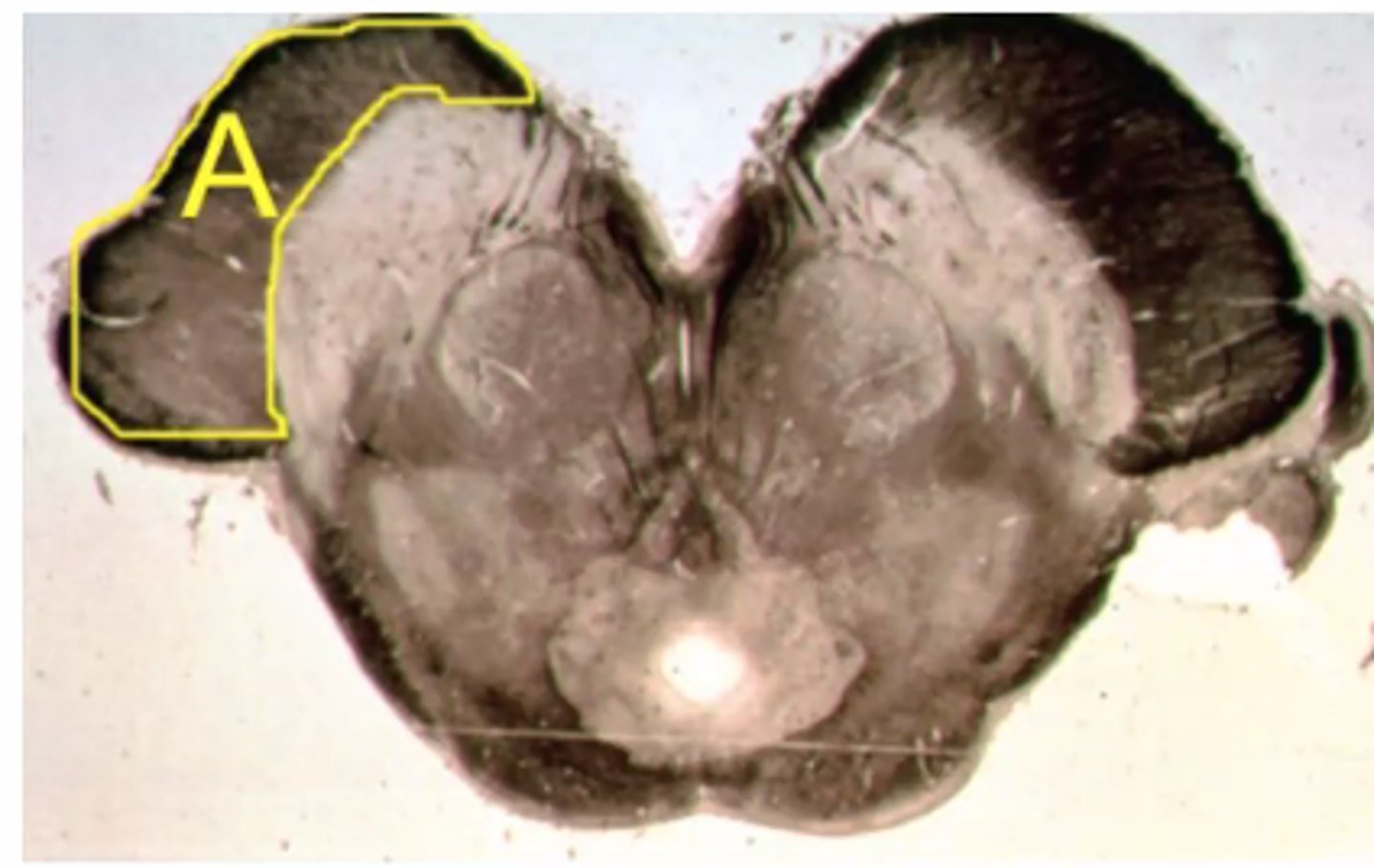
A. contralateral loss of vibratory sense from the body
Describe the signs/symptoms if structure "A" is lesioned
A. contralateral loss of vibratory sense from the body
B. contralateral spastic paresis to the body
C. Ipsilateral loss of pain & temp from the body
D. contralateral flaccid paralysis to the body
E. ipsilateral loss of vibratory sense from the body
